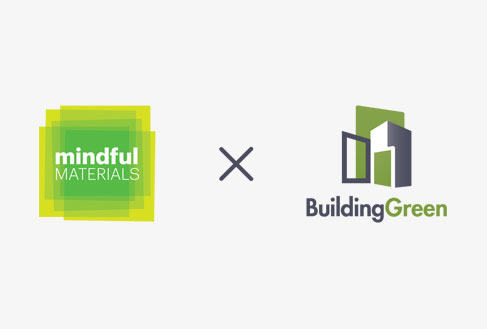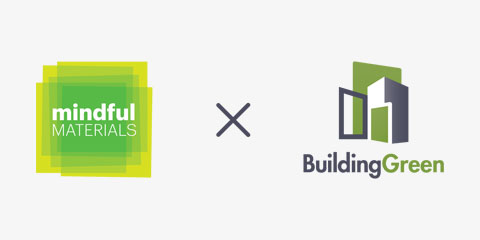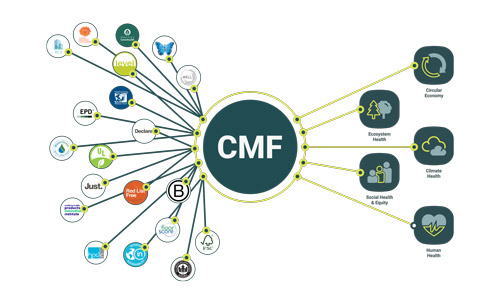Sustainability Knowledge: Structured for Impact
BuildingGreen is partnering with mindful MATERIALS, a 501(c)(3) nonprofit, on a mission to reverse the embodied impacts of the built environment. Together, we are driving the use of regenerative and restorative building products that meet an industry-aligned framework for health, sustainability, and resilience.
Here you will find educational resources provided by BuildingGreen that scrutinize material pros and cons related to each of the five impact areas of the Common Materials Framework. This resource collection supports pledge signatories across disciplines and elevates the broader context of decision making to include environmental and social attributes as well as performance characteristics and budget considerations.


The Common Materials Framework

Public material pledges have aligned the building industry around a common language for holistic material sustainability. The Common Materials Framework (CMF) is the roadmap to get there faster, together.
Organized around the five impact areas of AIA’s A&D Materials Pledge, the CMF is the outcome of a detailed cross-stakeholder industry effort. The CMF analyzes and organizes more than 100 of the most common building product and material certifications and disclosures, and gives structure to more than 650 relevant sustainability factors identified within these programs.
The goal? Help firms operationalize their material pledges through informed product research, selection, specification, and procurement.
Some chemicals used in our buildings can harm factory employees, people in fenceline communities, and jobsite workers. After construction, many types of products can benefit occupants—or put them at risk. Our resources help you leverage ingredient knowledge, wellness insights, and certain certifications for human health-focused decision making. By preferring products that support and foster life throughout their life cycles, practitioners drive efforts to eliminate the use of hazardous substances.
Embodied carbon is an increasingly urgent consideration: massive emissions from manufacturing concrete, steel, foam, gypsum board, and other building products are happening right now. Some products save energy and carbon during building operation. Our resources help you minimize the use of the worst offenders and support climate health by preferring products that reduce greenhouse gas emissions and sequester more carbon than emitted.
Water, soil, air, biodiversity: all are essential to human well-being. And all are threatened by land-use decisions as well as the building materials used to expand and enhance human developments. Our resources look at forestry practices, environmental pollution, and other topics relevant to environmental performance. Restoring ecosystem health requires the use of products that renew air, water, and the biological cycles of life, encouraging more thoughtful supply-chain management and restorative company practices.
We vote with dollars. So are we voting for human rights or human exploitation? Our resources elucidate how product choices can impact the lives of people who work in manufacturing and construction. Practitioners can support social health and equity by preferring products from manufacturers that secure human rights in operations and in supply chains, positively impacting workers and the communities where they operate.
A linear economy goes in one direction: take → make → waste. Circularity requires a radical mindset shift: it’s a holistic approach that designs for disassembly and reuse, and creates the conditions and infrastructure to ensure reuse happens. Our resources help you identify approaches and materials that can be part of this new, urgently needed economy. A circular economy demands that we reuse and improve buildings and design for resilience, adaptability, disassembly, and reuse, aspiring to a zero-waste goal for global construction activities.







